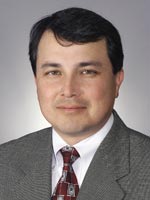|
Marketing Loss control—More than just an add-on Agencies that focus on loss control achieve positive, long-term results By Dave Willis
Whether the market is hard or soft, successful agents focus much of their attention on loss control. Take the case of J.W. Terrill, a St. Louis, Missouri-based broker and a member of RiskProNet, a group of about 30 large, independently owned brokers throughout the United States and Canada who share information on various operational issues, including loss control. Stephen Gillen, J.W. Terrill vice president and manager of risk management services, often finds himself riding shotgun on sales calls. “We go in with a game plan to get a good perspective of the client,” he says. Gillen often has basic client information. But not always. Sometimes he has to shoot from the hip. “If I can’t go back and look at their losses to identify red flags, which would show what we can bring to the table, then we have that discussion at the time of the presentation,” he says. Gillen, who has worn several hats during his career—from corporate risk manager to insurance company and broker employee—says one of the most important elements of integrating loss control and risk management with sales is an ability to listen to clients. “You need to understand what clients are dealing with, how they conduct their operation, then, based on that, come up with approaches to help them minimize exposures and eliminate losses,” he says. According to Tom Honn, senior vice president at Chicago-based Mesirow Financial, another RiskProNet broker, the next step is to build on what you’ve learned. “With each client or prospect we work with, we evaluate needs, then put together a clear strategy to move them forward,” he says. “We determine whether they’ll be able to do these things on their own, or if they’ll need assistance from us, assistance from the carrier or, in some cases, outside assistance.”
Often, the listening and needs evaluation focuses on culture as much as anything. “Behavior is often what employees view they can do within an environment, based on how the culture is set up,” says Lew Kachulis, president of Gilbert’s Insurance & Consulting, in Sharon, Pennsylvania. “You need to look at how management defines the culture.” One way his firm identifies that is by looking at what he calls accident repeater—the relatively small number of employees who have multiple workers comp injuries that account for the bulk of an account’s claim frequency. “We’ll sit down with a new customer and ask, ‘Do you feel like you have a behavioral problem?’” says Jim Culligan, loss control services vice president at Gilbert’s. “Many times they’ll come back and say, ‘No.’ One employer told us they hold employees accountable and don’t have a problem with multiple injuries.” The data didn’t support that, though. “We found that 45% of the total claim frequency over a five-year period was from 10% or so of the employees,” he says. Oftentimes, the frequency is higher—up to 75%. “If the frequency of accident repeaters is high, we can tell right away that the culture is not as stringent as it could be,” Kachulis says. “We say management may be bending over to pick up a one-dollar bill when fives are falling out of their pockets.” Bringing such data, and a plan to address it can go a long way in making a sale. By the same token, it can help reduce losses with existing customers, and lead to higher persistency and account growth, as well. Retention and rounding By implementing a loss control business plan, agencies can help clients cut frequency and severity, which leads to greater retention and opportunities to round out accounts. Along with their accident repeater program, Gilbert’s helps supervisors develop what they call safe operating procedures. “In one situation, in a nursing home, we established a no-lift program, requiring that employees not lift and transfer residents manually if they couldn’t ambulate on their own,” Culligan says. “We trained all employees and supervisors on this.” One employee violated the policy and was injured. “The employee was counseled and retrained, and it was documented,” Culligan says. Within a month, the worker violated policy again and was injured again. This time, the insurer denied the claim based on what they called willful misconduct. The employee challenged the denial, but the court upheld it because the employer could demonstrate they counseled and retrained the employee, and the employee violated the work rule twice. “Whenever you can get a company to create safe operating procedures, train staff, investigate accidents promptly and document actions, you can really control the environment,” Culligan says.
In Chicago, Mesirow Financial worked with a 350-person packaging manufacturer to put together an effective program for selecting, training and managing employees in the workplace, and for holding plant managers, department managers and supervisors more accountable for the safety performance. “After a 12-month implementation and training period, revamping their safety program, the company turned their claims performance around to where losses were less than 25% of what they had been,” says Bruce Slayter, managing director of risk management services at Mesirow Financial. “We refocused the program, the communication, the measurement, and the compensation and evaluation for managers.” The result: a 75% drop in claims—and a happier client. Successful loss prevention and risk management advice to the subsidiary of a large contracting firm—one with a number of different units, including land development, surveying, paving, and concrete manufacturing—enabled Gillen to nab the business of those additional customers/subsidiaries as well. “We had an opportunity to really get involved with the client on a portion of the business,” he says. Tools in Gillen’s arsenal included safety plans, agency-sponsored occupational safety seminars and an agency-carrier analysis of client culture. Because of positive results with the one subsidiary, the agency ended up writing all of the other entities in the organization. “We had to prove ourselves in terms of what we brought to the table,” he says. Convincing the carrier An agency’s focus on risk management and loss prevention often plays an important role with carriers as well. According to Slayter, demonstrating knowledge of loss prevention and strategies for addressing it, can help agents and brokers place business with top-tier carriers. “In getting to know a prospect, we do an in-depth review of who they are, what they do, and what their experience has been; and we put that into a detailed communication piece for the underwriters,” he says. “It makes a big difference when we can demonstrate that we know the account, warts and all, and have a plan to work with them.” Gillen echoes that. “Working with producers in putting together a loss control program improves an account’s marketability,” he says. “We tell the truth in terms of what the client has done, what they’re able to do and how they’ve been with the rest of their program. That’s played a significant role in terms of successful marketing and renewals, and even for new prospects, in getting the business on board.” Dealing with underwriters is not the time for sugarcoating, though. When problems exist, it helps to communicate them. “It may be more difficult to market some accounts, but we just need to be honest about them and have an honest conversation with the client, as well,” Gillen says. What he finds is that when underwriters recognize that an agency understands the issues, and has a plan to help improve results, they’re more flexible. Agencies also should let underwriters know that customers understand their situation. “If an account doesn’t recognize they have problems they need to work on, there’s no reason for an underwriter to expect to see any improvement in the risk,” Slayter adds. Building the business Agencies that help clients manage risks and reduce losses stand to boost profitability and revenue. But that’s not all. Kachulis says his agency’s focus on risk management is leading to a new venture. “In our TPA (third-party administrator) business, we saw we were driving down not only our clients’ frequency of claims, but also the severity,” he says. “We did a study internally that showed we were cutting them by 60%.” So they decided to build on their success and start their own insurance company. An actuarial report verified their results, indicating that if the agency’s self-insured clients had been fully insured with a standard rate, their loss ratio would be less than 15%, Lew says. So the agency will make its case to the state insurance department and potential investors, in an effort to get the new insurer up and running this year. * The author |
||||||
|





